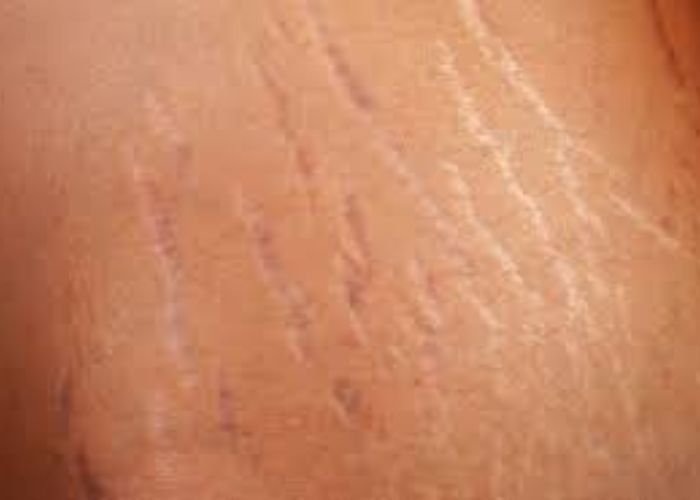People who aspire to have perfect skin frequently look for ways to hide or lessen the visibility of stretch marks. These marks, which are frequently brought on by pregnancy, rapid development, or weight swings, might make one feel self-conscious. Of all the treatments, spray tanning has come to light as a possible way to hide stretch marks. But does it really provide a workable answer? Let’s read below”Does Spray Tan Cover Stretch Marks”.
Understanding Stretch Marks: Nature and Characteristics
Understanding the nature of stretch marks is crucial before discussing how effective spray tanning is in hiding them. These marks, which are referred to as striae in medicine, appear as visible lines on the skin and are usually caused by the skin expanding past its natural boundaries. They start out red or purple and eventually turn into lines that are silvery-white. The arms, thighs, hips, breasts, and abdomen are common places to get stretch marks.
Mechanism of Spray Tan: How Does It Work?
Spray tanning is the process of giving the skin a brief golden or tan by misting or spraying it with dihydroxyacetone (DHA). Melanoidins, a class of pigments, are created when DHA combines with the amino acids in the epidermis to produce this pigmentation. Although the main goal of spray tanning is to temporarily darken the skin, it is not always efficient at covering up flaws like stretch marks.
Does Spray Tan Cover Stretch Marks? The Reality Unveiled
Several factors determine how well spray tanning covers stretch marks. Stretch marks can often be less obvious by applying a spray tan, which lessens the contrast between the lighter skin and the marks. It’s important to understand, though, that spray tanning does not actually change the stretch marks’ depth or texture. Therefore, it doesn’t completely eradicate them even though it might partially hide them.
Optimizing Spray Tan Application for Stretch Marks
Preparation: To give a uniform application, shed the skin before splash tanning. . This may likewise assist with leaving the imprints less observable.
Technique: Master application by qualified experts could create unrivaled results. They can decisively apply the splash tan and join it so as to lessen the differentiation between the skin and stretch imprints.
Alternative Solutions for Stretch Marks
Indeed, even Complexion: Splash tans include the utilization of a fine fog of tanning answer for the skin, making an even and predictable variety. This can assist with covering the presence of stretch imprints by giving a uniform tone to the skin.
Cover Impact: The shades in the shower tan arrangement obscure the skin, assisting with limiting the visual difference between the stretch imprints and the encompassing skin. This leaves the stretch imprints less observable.
Impermanent Inclusion: It’s vital to take note of that splash tans offer an impermanent arrangement. The impact normally goes on for about a week or somewhere in the vicinity, contingent upon individual factors, for example, skin type, exercises, and aftercare.
Facts
Experts can redo the tan to match your complexion and guarantee an even application, diminishing the probability of lopsided inclusion overextend marks.
Saturate for Improved Results: Very much hydrated skin will in general clutch a tan better. Saturating routinely when a splash tan can help the variety last longer and mix more flawlessly. With the skin, working on the general appearance.
Pick the Right Arrangement: Different splash tan arrangements might have shifting degrees of inclusion. Examine your particular necessities and worries with the shower tan professional to pick an answer that gives the ideal inclusion to your stretch imprints.
Fix Test: Prior to getting a full-body shower tan, consider doing a fix test on a little region to guarantee that the tanning arrangement responds well with your skin and accomplishes the ideal inclusion on your stretch imprints.
Sans uv Elective: Splash tanning gives a without uv option in contrast to customary tanning strategies, which can be destructive to the skin. UV openness can deteriorate the presence of stretch imprints, making splash tanning a more secure choice for those hoping to cover them.
Conclusion: The Verdict on Spray Tan and Stretch Marks
Stretch mark visibility can be temporarily and cosmetically reduced with spray tanning. Stretch marks are not removed, nor is their texture changed, however, color coverage might assist in lessening their appearance.
Effectively treating stretch marks requires an understanding of its limitations. As well as an exploration of alternate remedies that are customized to the preferences and skin types of each individual. I hope you like reading”Does Spray Tan Cover Stretch Marks”.

